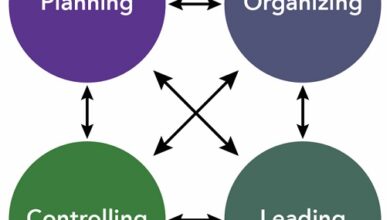What is Collective Identity characteristics and Examples
Collective Identity
Collective identity, unlike individual identity , is the sense of belonging to a certain community that its members experience, and that constitutes to some extent an answer to the question of who they are. It is at the same time a phenomenon of self-perception (how individuals perceive themselves) and a way of relating to others (social identity).
Human beings are gregarious and social beings, who are always part of not just one, but multiple communities, each of which contributes to the formation of our individual identity, at the same time that we contribute to the formation of a collective identity. This phenomenon that has been of interest to scholars of psychology and anthropology over the decades.
More about Collective Identity
Collective identity is the result of affective, social and cultural relationships that occur within a given community. These relationships lead in different ways to the construction of a “we” (ingroup), that is, of a group identity with which its members distinguish themselves from the rest of society (outgroup ) .
In this way, certain symbols, practices, traits, traditions or ways of being are valued as belonging to the group and at the same time to each individual.
For example: Among the urban tribes of England in the 1980s, Punks often dressed in outlandish ways: jean jackets, combat boots or even leather clothing, as well as multicolored crests, piercings and tattoos. In addition, they mostly adhered to an anarchist or socialist political current , and professed slogans such as “ There is no future ” (“There is no future”).
The principles of collective identification are the brotherhood of values and belonging to a “we” in conflict with the majority. They can be traced in different minority communities of contemporary societies, even, on a much larger scale, between nationalities or regional demonyms.
For example, Latin Americans tend to think of corn-based gastronomy as a feature of their “own” identity, despite the obvious differences that may exist between a taco, a pupusa, an arepa, or a tamale.
The nature and functioning of identities, however, are the study of social classes stands out. This topic involves many aspects and can be understood from different angles; therefore, it is the subject of much debate in the social sciences . There are voices that warn against a certain essentialism in the matter, that is, against the idea of believing that something as Each type of memory has its own operation, although all of them cooperate to carry out a complete memorization process. This is complex as identity (individual or collective) can be reduced to a fixed and recurring set of characteristics.
In fact, the same individual can profess different collective identities at the same time , especially if they are migrant individuals.
Characteristics
In general, collective identity is characterized by the following:
- It is typical of a human group that can range from a few individuals to entire nations , and is understood as the sum of their individual identities, although in reality it is not: an individual can feel part of a community without necessarily adhering to all its characteristics. .
- They make up a “we” or ingroup, opposed to the rest (outgroup), and this differentiation is reinforced through rites , practices, physical features or ways of expressing themselves.
- They are not really absolute identities : their individuals can feel part of different collectivities at the same time, or they can jump from one to another over time. The edges of a collective identity are porous, and there are more radical positions and others that are more lax.
- They group and give meaning to different aspects of daily life , such as culture , language , religion , clothing, gastronomy, ideology, political militancy or ethnicity , to name just a few.
Examples of collective identity
Some examples of collective identity are the following:
- Urban tribes , typical of industrialized nations, which group young people from different strata and origins around certain consumer values such as music , clothing style, personal decoration (piercings, tattoos, hairstyles, etc.) and, in general, around certain interests and certain ways of speaking. For example: punks, goths, gamers, geeks , etc.
- Ethnic minorities , when they organize to exert a certain resistance against the culture perceived as “ hegemonic ” or central to the State . For example: in American society, Afro-descendant groups are distinguished from the so-called Latinxs and even from the southern white working classes (disparagingly referred to as ” White Trash “).
- National identities , which try to assimilate entire populations of millions of inhabitants around a foundational patriotic story, a set of national symbols and a language, for which they have an educational system, civic training and different protection mechanisms for a “own” culture.



